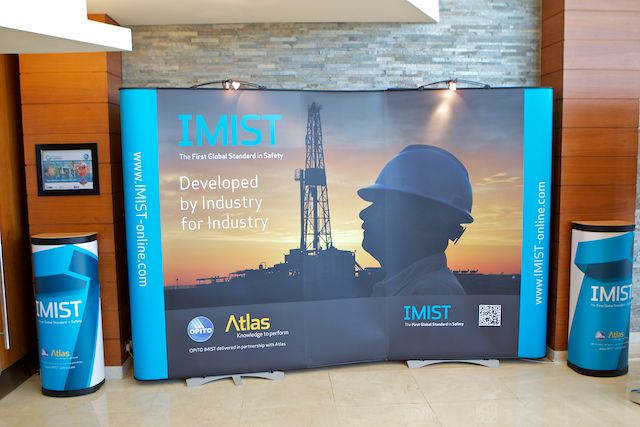IMIST: Oil & Gas Industry International Minimum Industry Safety Training (IMIST)
An introductory safety training programme for oil & gas personnel.

Approved by OPITO
IMIST: Oil & Gas Industry International Minimum Industry Safety Training (IMIST)
฿15,000.00 1 day
Course Overview
The oil & gas industry operates in some of the most dangerous environments in the world. Hazards are expected in this setting and must be controlled. Improvements in technology, workforce involvement, infrastructure care and rig operations have led to recent reductions in injuries and incidents but, it is recognised, more still needs to be done. It is believed that improved base line safety training is likely to improve the situation by ensuring that all personnel have the necessary safety awareness and basic skills training to recognise and avoid risk. To address this need, companies in the UK North Sea, along with Step Change in Safety, agreed to develop an introductory training programme that would introduce the key safety elements required by all employees.
Employers, through the Middle East Africa and Asia Pacific Employers Forums, from oil and gas regions around the world have asked for an equivalent programme to be developed to meet the global needs of the oil and gas industry. In response to this request, OPITO, in conjunction with industry representatives, has developed an International Minimum Industry Safety Training standard suitable for use irrespective of location.
Who should attend
This introductory safety training programme is designed to introduce the fundamental safety elements of the oil & gas industry to new starts, giving an appreciation of the potential hazards and controls that might be encountered by personnel. Each unit has been designed to focus the delegates’ attention on their personal responsibility for safety thus influencing their behaviour and attitude towards their co-workers, the oil and gas operations and the environment.
Aims and Objectives
The aim of the IMIST programme is to introduce delegates to the key safety elements required by all employees working in the oil and gas industry. It also ensures the knowledge and understanding of these basic safety elements are maintained and current amongst the existing workforce.
Physical and Stressful Demands
There are no specific medical requirements, although personnel must have a current offshore medical certificate before being allowed to work offshore.
Prerequisites
No pre-requisites required.
Course Outline
Module 1 Introduction to the Hazardous Environment
- Element 1.1 Hazard Awareness
Module 2 Working Safely including Safety Observations Systems
- Element 2.1 The Safety Structure in Oil and Gas Operations
- Element 2.2 Safe Systems of Work (SSOW)
- Element 2.3 Safety Observation Systems
- Element 2.4 Personal Contributions and Responsibility for Safety
Module 3 Understanding the Risk Assessment Process
- Element 3.1 Risk Assessment
Module 4 Tasks that Require Permit to Work
- Element 4.1 Permit to Work (PTW)
Module 5 Personal Responsibility in Maintaining Asset Integrity
- Element 5.1 Asset Integrity
Module 6 Using Manual Handling Techniques Every Day
- Element 6.1 Manual Handling Hazards
- Element 6.2 Manual Handling Controls and Mechanical Devices
Module 7 Controlling the Use of Hazardous Substances
- Element 7.1 Sources of Chemical Hazards
- Element 7.2 Practical Controls for Chemical Hazards
Module 8 Knowledge and Practices of Working at Height
- Element 8.1 Working at Height Activities and Hazards
Module 9 Being Aware of Mechanical Lifting Activities
- Element 9.1 Hazards of Mechanical Lifting Operations
Certification
OPITO certificate. Reassessment, via an on-line assessment, will take place every four years or more frequently if persons have not worked in the industry for at least 12 months.
Competency
Online Assessment
Included
N/A
Schedule, Class Size, Locations
Weekly Schedule:
Available On-Request
Min/Max Class Size:
∞
Locations:
Laemchabang near Pattaya



